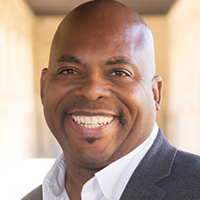Trusting News Shows A Path To Transparency
Over the past few years, an increasing number of newsrooms have reversed a long-standing practice of publishing mugshots. Recently arrested individuals are awaiting trial to determine guilt or innocence, and many news organizations have come to recognize the damage that can be done to a person, who may yet be vindicated, by printing their mugshot or flashing it across the airwaves.
So when the E.W. Scripps-owned CBS affiliate KMTV Omaha, Neb., announced in June that viewers would see fewer mugshots during its broadcasts, it was a conscientious act, but not a completely revolutionary one. However, in this time of prioritized breaking news, story counts in A and B blocks and relentless 24-hour news cycles, it was unusual for KMTV to bring one broadcast to a halt and have its anchors serve up a story from reporter Aaron Hegarty about the new station policy.
In his piece, Hegarty noted that the KMTV news crew “realized mugshots are often a snapshot of someone at their worst moment, perhaps fueled by mental health-, addiction- or trauma-related issues.” In addition to his broadcast segment, a written version of his report for the KMTV website also explained that the station will air mugshots only when the subject has been found guilty, when they are at large and considered dangerous or when police believe there could be other victims related to the crime of which they are accused.
The content was inspired by talks, tips and training sessions that the KMTV staff engaged in with Trusting News, an organization dedicated to building consumer trust in news.

Lynn Walsh
“How we do that is by encouraging journalists to be transparent about how they do their jobs, their process, explaining how news works, but then also by engaging with the audience and gathering feedback from them, considering that feedback and potentially acting on that feedback,” says Lynn Walsh, assistant director of Trusting News.
Staffed by just three people — Walsh, director and founder Joy Mayer and project manager Mollie Muchna, who between them have decades of newsroom experience, have won several awards and taught journalism at the college level — Trusting News offers workshops covering various approaches that news groups can take to enhance viewer confidence in their product. The team tests its methods, conducts research about consumer trust and writes articles about its findings as well.
The Reynolds Journalism Institute is a Trusting News founding partner, and a few years ago the American Press Institute also signed on as partner. Additional partners and financial supporters of the 501(c)3 national nonprofit educational organization have included The Poynter Institute and The Knight Foundation.
Walsh got involved with Trusting News after serving as the Society of Professional Journalists’ ethics chair and national president. During that time, she often spoke with TV watchers about their skepticism with news. She says many believed news groups had agendas behind their coverage and that they were being influenced by advertisers and parent companies (i.e., in affiliate partnerships), among a host of other erroneous assumptions.
“By making the time to explain how news worked, we were able to come to a point where we could then talk about what the real issues were, and they were able to not have that negative assumption about news that was causing them to think that news was biased or had an agenda,” Walsh says. “As I as doing that I thought: ‘Wow, we should be doing more of this.’”
Turned out, since 2016 Trusting News had already been doing more of it, while also showing news team members how they can better bake transparency into broadcasts. Walsh began helping out a year after the group’s founding.
She says Trusting News breaks down what newsrooms can do to make consumer confidence more robust into two categories: institutional and day-to-day changes.
For an example of an institutional consideration, Walsh says stations should tell consumers who is on their staff, if there are conflict of interest policies in place, as well as who owns the station, how they may influence news decisions and how the station generates revenue.
“We encourage newsrooms to be transparent about that and have it easy to be found for news consumers,” Walsh says. One of the ways Trusting News tells its publisher partners they can do so is to simply have a dropdown menu on their website with an About page that outlines who ownership is, who’s on staff, how consumers can contact various station employees, a mission statement, goals with coverage, how they approach crime stories and how they utilize anonymous sources. “The list goes on and on,” Walsh says.
Trusting News cites the staff bio page on the website of KPRC, a Graham-owned NBC affiliate in Houston, as an excellent example of the type of institutional transparency the organization values and teaches. Each staffer has a detailed biography that lists their journalism credentials, but also personal information that allows consumers to “get to them as real people,” according to the Trusting News website. Scroll across the face of each staffer and their headshot will turn from a typically professional one into a different photo where their personality shines. (Reporter Deven Clarke is suddenly holding a violin in the alternate pic, for example.)
On a day-to-day basis, Trusting News tells stations it has partnered with to add what Walsh calls “trust language” to its broadcasted segments, websites and social media posts. Trust language includes indicators of why the news team chose a particular story, how they went about reporting it, why they believe the story serves the community of viewers watching and ask for feedback from consumers, including advice on other people or groups reporters could talk to for expanded coverage of a given story.
“As journalists we work so hard to not only get our facts right, but to try to be fair, to try to not have a bias, to add context, and so [we encourage] journalists on air to talk about that,” Walsh says.
Although there are additional benefits to this approach, Walsh says it helps nix the notion on the part of some viewers that the station is agenda-driven. She adds that a reporter could also build trust with viewers by explaining why they did not include certain information in a story, perhaps due to a lack of access, for example. This can be carried out in tags at the end of stories or Q&A sessions between reporters and consumers on social channels, forums and elsewhere.
Another viewer concern Walsh has heard many times through the years is the sometimes-opaque nature between news and opinion, and misty lines drawn between sponsored content and news content. She says consumers want broadcasters to clear these issues up with conspicuous tells on their TVs.
All these steps may take up time in a newscast, but Walsh says it’s worthwhile to publishers. Trusting News research, as well as findings from other organizations, show that building trust in news “leads to a more dedicated audience,” Walsh says.
People can get headlines anywhere, she adds. What viewers of TV news want is context.
“When we look at the Trusting News approach, we are saying: ‘You’re going to have to do journalism differently and that may mean that you’re slowing the newscast down a little bit,’” Walsh says. “‘That may mean that you’re OK with an intro being 20, 30 seconds instead of 10.’ Are you willing to do that to build a relationship? If you’re not … who’s going to watch us in 20 years?”
“Building trust with your audience is crucial,” says Mike Canan, former news director of WCPO, the Scripps-owned ABC affiliate in Cincinnati that worked with Trusting News. Canan says Trusting News helped the station “rebuild relationships with our audience,” first through research on the community and, later, with training he says “helped us flex new muscles to increase transparency in significant ways online and on TV.
“While measuring trust is challenging,” Canan continues, “I definitely think our efforts increased the audience’s trust in WCPO based on anecdotal conversations and some of the follow-up focus group work we did with the Trusting News team.”

Michael Bolden
Michael Bolden, CEO and executive director of the American Press Institute, says Trusting News “trains journalists to attempt to rebuild the connections that have been damaged — or that may not have existed in the first place.” Such connectivity is important, he says, as trust in institutions, including media, declines, while there’s growth in the amount of misinformation people encounter.
“The problem is exacerbated for the news industry because fewer people are likely to know a journalist or to have a personal connection to a media organization today due to the shifting dynamics in our industry’s business models,” Bolden says. “Trusting New’s toolkits and guides, which cover everything from explaining how the story reporting and editing process works to being transparent about how a news organization handles corrections, help people in the community better understand and relate to the work that journalists do and how that work helps everyone more fully participate in our larger society. This is essential in the complex times we live in.”
As much work as Trusting News, groups like it and publishers have put into cultivating greater consumer confidence in TV news, there has not been improvement in public perception. According to Gallup, it’s only continued a downward trend, as it has for the better part of the last four decades.
But Walsh and her two Trusting News compatriots are sure to keep on and carry on.
“We just need to be willing to open the door, peel back the curtain and let people in on the process,” Walsh says. “We need to be willing to have some humility and admit that maybe there have been mistakes, or that we are just doing our best, and we’re working toward this end goal and we’re just trying to get as close as we can every day. It may not be perfect, but that is what we’re striving for.”


































Comments (0)